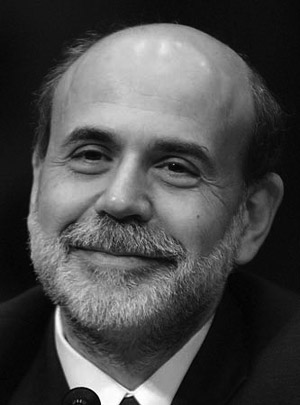
An idea struck me yesterday morning while listening to Steve Liesman, CNBC’s economic contributor, rattling on about the state of lending on Squawk Box. This sparked a connecting idea in me on how to free up credit and start pumping loans into the broad economy.
But before I explain it, I have to preface this by recalling Henry Blodget’s article at The Business Insider last week called “How to Make the World’s Easiest Billion,” which helps set the framework for my thought process and subsequent reasoning. He explains that you can earn a billion dollars in just 11 easy steps: by setting up a bank, raising equity, borrowing at the bank rate (practically zero) to lever yourself up, buying long-term government bonds, and then sitting back to enjoy earning the spread between the near and long term interest rates and the pay commensurate with printing boatloads of cash. Originally, I thought it was just meant to be a joke, but the more I thought about it he probably meant it as satire, poking fun of the actual condition of the world. Mr. Blodget asserts that banks have a license to print money, with virtually no risk for them (nod to the taxpayer footing the bill), as long as interest rates are on the floor or as long as the rate curve is as steep as it is.
This is where my idea comes into play: if the Fed were to raise rates, bringing them up off the floor it would be put the squeeze (reducing the return) on this play as well as pulling back the reigns on inflation. In turn, by decreasing the profit of this risk-free trade it would shake the bankers out of their risk aversion stupor, causing them to search for other ways to earn themselves, and their shareholders mind you, outsize profits. By increasing the opportunity cost of loaning to the government, the relative opportunity cost of lending to the private sector decreases, meaning you could potentially (special emphasis necessary) start to increase the overall lending to businesses and consumers in the economy. I realize that this idea is wild, because it is the inverse of the way monetary policy is supposed to work (lower interest rate increases investment and lending) but it could be a function of how irregular and extreme our current predicament is with short term rates at zero and quantitative easing pushing the effective rates into negative territory.
I know the Fed doesn’t plan to increase rates in the next few months, but when it does, I propose, that we will observe credit will start to become more available because of the rationale above. Of course, separating that factor from others, including programs designed to spur increased lending, would be difficult. But at least some small part of the overall effect could be attributed to the rate curve flattening out.
JDW
But before I explain it, I have to preface this by recalling Henry Blodget’s article at The Business Insider last week called “How to Make the World’s Easiest Billion,” which helps set the framework for my thought process and subsequent reasoning. He explains that you can earn a billion dollars in just 11 easy steps: by setting up a bank, raising equity, borrowing at the bank rate (practically zero) to lever yourself up, buying long-term government bonds, and then sitting back to enjoy earning the spread between the near and long term interest rates and the pay commensurate with printing boatloads of cash. Originally, I thought it was just meant to be a joke, but the more I thought about it he probably meant it as satire, poking fun of the actual condition of the world. Mr. Blodget asserts that banks have a license to print money, with virtually no risk for them (nod to the taxpayer footing the bill), as long as interest rates are on the floor or as long as the rate curve is as steep as it is.
This is where my idea comes into play: if the Fed were to raise rates, bringing them up off the floor it would be put the squeeze (reducing the return) on this play as well as pulling back the reigns on inflation. In turn, by decreasing the profit of this risk-free trade it would shake the bankers out of their risk aversion stupor, causing them to search for other ways to earn themselves, and their shareholders mind you, outsize profits. By increasing the opportunity cost of loaning to the government, the relative opportunity cost of lending to the private sector decreases, meaning you could potentially (special emphasis necessary) start to increase the overall lending to businesses and consumers in the economy. I realize that this idea is wild, because it is the inverse of the way monetary policy is supposed to work (lower interest rate increases investment and lending) but it could be a function of how irregular and extreme our current predicament is with short term rates at zero and quantitative easing pushing the effective rates into negative territory.
I know the Fed doesn’t plan to increase rates in the next few months, but when it does, I propose, that we will observe credit will start to become more available because of the rationale above. Of course, separating that factor from others, including programs designed to spur increased lending, would be difficult. But at least some small part of the overall effect could be attributed to the rate curve flattening out.
JDW



